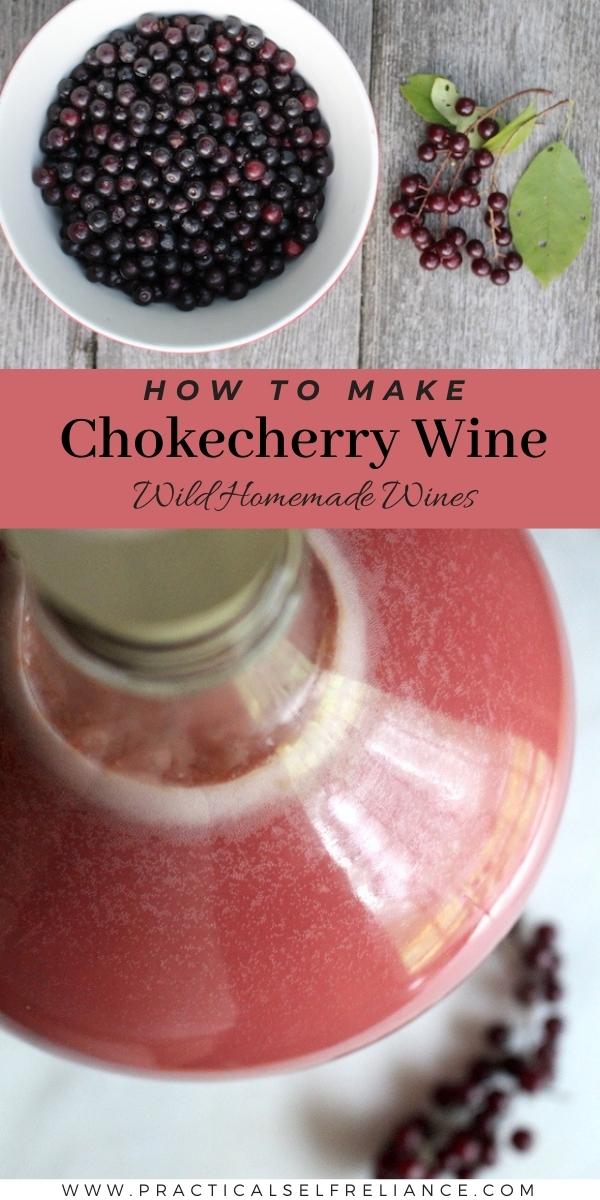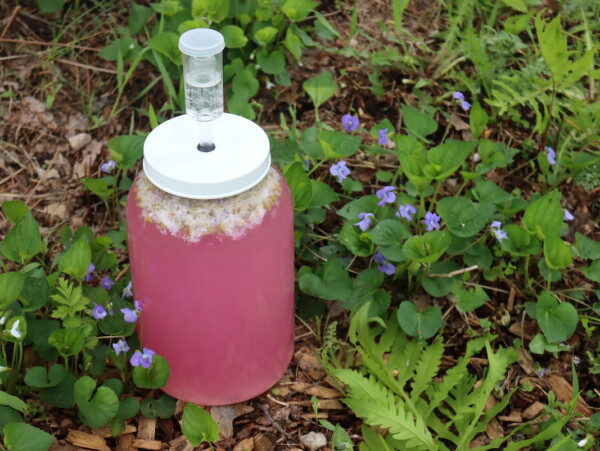Affiliate disclosure: This post may contain affiliate links. Please see our Privacy Policy.
Chokecherry wine is a tasty way to use up a bumper crop of wild foraged fruit.
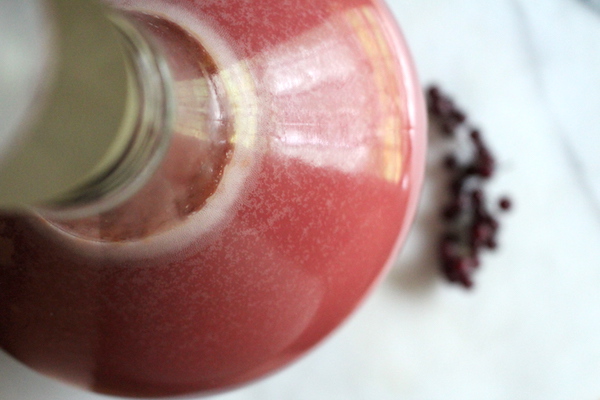
Chokecherry wine is a spectacular treat to share and savor. A wine that is both full-bodied and delightfully tart, it can be left dry or sweetened to taste. Add honey instead of sugar and you can make chokecherry mead.
Trying to get your friends to try anything including the name “chokecherry” may be a hard sell, but chokecherry wine should quickly convert them. Ripe chokecherries are sweet with a more subtle astringency and absolutely perfect for winemaking.
Chokecherries, also called bitter berry and bird cherry, belong to the stone fruit family as do cherries, apricots and plums. Not to be confused with the similarly-named chokeberry, chokecherries are a species of prunus with a single stone, while chokeberries are a species of aronia with several seeds inside.
While commonly regarded as bitter, chokecherries must be picked at the right stage to truly appreciate their flavor.
You can forage chokecherries from mid-August to early September in most places, often finding them alongside roadways or at the edges of wooded areas. You’ll want to steer clear of those that are bright red — these are underripe and terribly bitter.
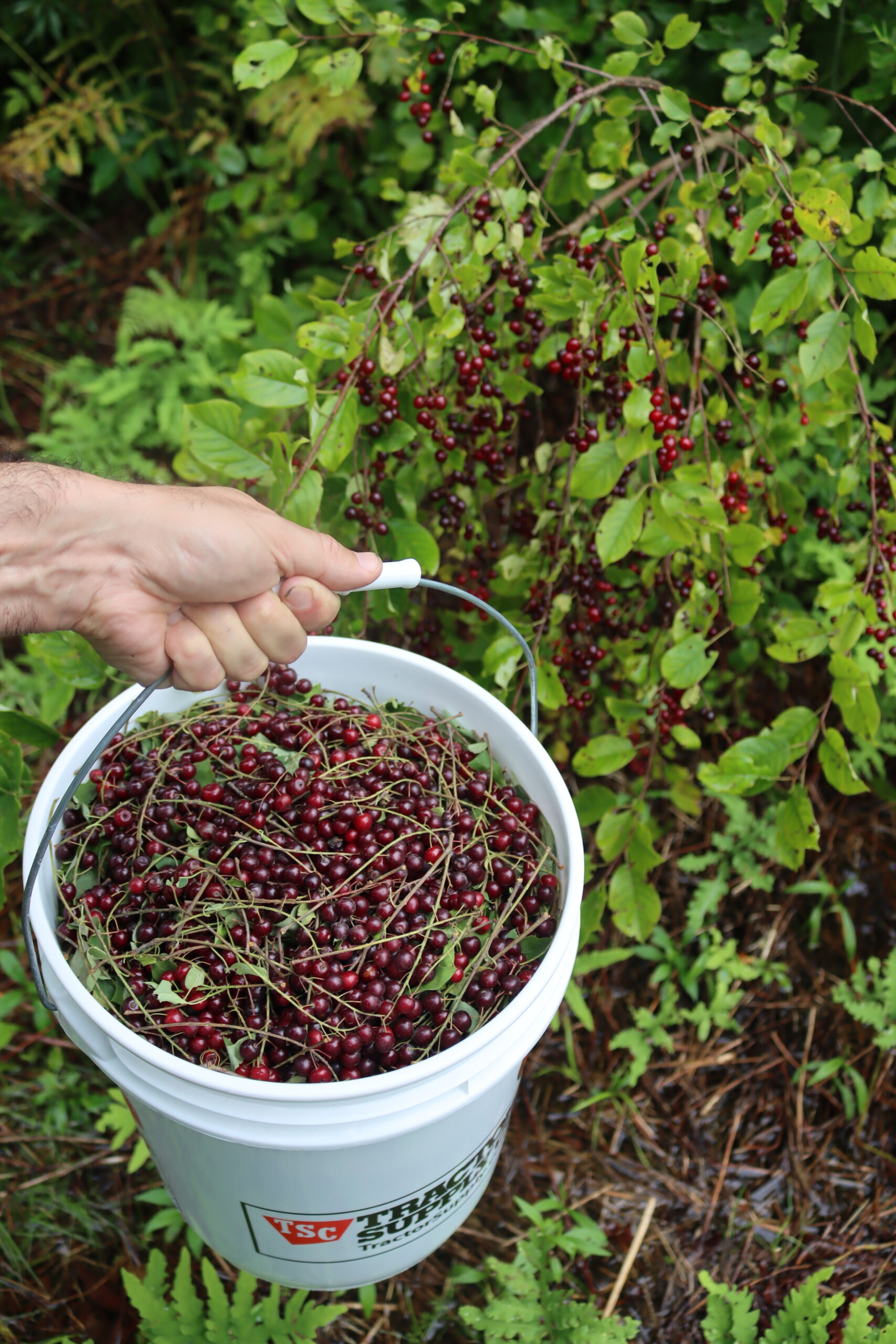
Ripe chokecherries are a darker plum red, with some being almost black if they make it to this stage (although birds and mammals tend to get to them first in the wild.)
Ripe chokecherries are pleasantly sweet and will yield a much better wine or mead.
The steps involved with making chokecherry wine are pretty much the same as with any small-batch country wine recipe.
With chokecherries, you have the option of either juicing the fruit or placing it in a brew bag for the primary ferment. Here, you take your fruit or juice, add some sugar for sweetness, and combine with a few other winemaking ingredients along with a good wine yeast.
This mixture will ferment for 5 to 10 days, until the active fermentation begins to slow. The mixture will then be siphoned to a clean fermentation vessel, leaving the fruit and sediment behind.
During this phase, your wine should be kept in a cool dark location, where it can ferment more slowly. This should take a few months, after which the wine can be bottled. After maturing for a few more months, the wine is ready for sharing (or savoring all to yourself).
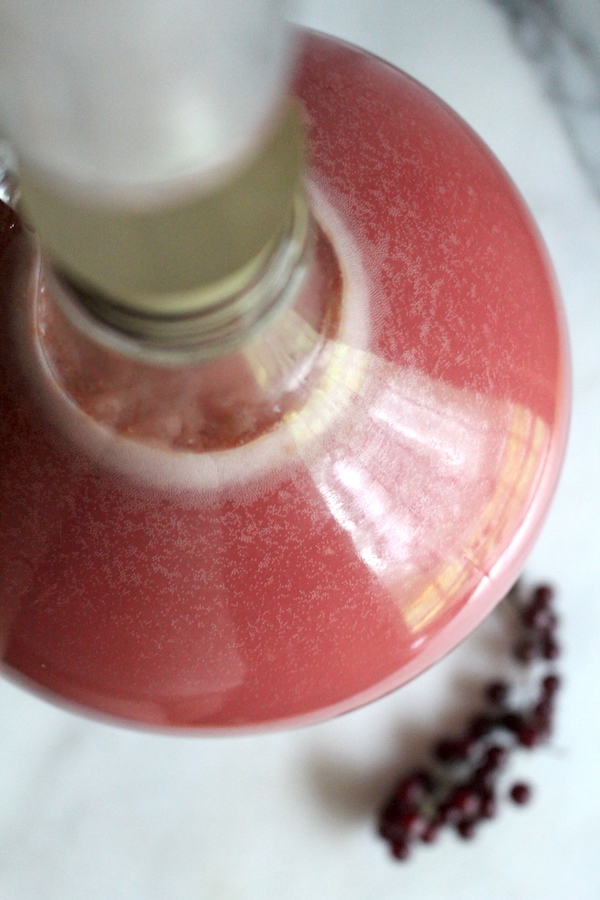
This recipe has been written assuming the reader is pretty familiar with the general winemaking stages, steps and terms. For anyone newer to this field, you can skim these guides to get you up to speed:
- Beginners Guide to Making Fruit Wines will be your introductory guide, taking you through the general process step by step.
- How to Make Mead (Honey Wine) does the same, but tells you about the particularities that exist when working with honey.
- Equipment for Winemaking will fill you in on what each piece of equipment does and how.
- Ingredients for Winemaking covers what each component (besides yeast) does in winemaking as well as what substitutes you can use.
- Yeast for Winemaking may seem vast and complicated to winemaking newcomers. This guide will break it all down for you.
Ingredients for Chokecherry Wine
To make chokecherry wine, you’ll first need to gather a few ingredients.
You may also wish to read this guide on winemaking ingredients to learn what each of these things does in winemaking and why they’re needed.
To make a one-gallon batch of chokecherry wine, you will need:
- 4 to 5 lbs chokecherries (stemmed)
- 2 1/2 lbs sugar (5 cups)
- 1 tsp Yeast Nutrient
- 1 tsp Acid Blend
- 1 tsp Pectic Enzyme
- Wine Yeast (preferably Lalvin EC-1118)
- Water, to fill
Chokecherries are naturally higher in tannins so no wine tannin is needed. They do need a little acid blend to give the wine balance though.
These berries are also rich in pectin (and pectin is no friend to you in winemaking) so you’ll need a pectic enzyme to help the wine clear.
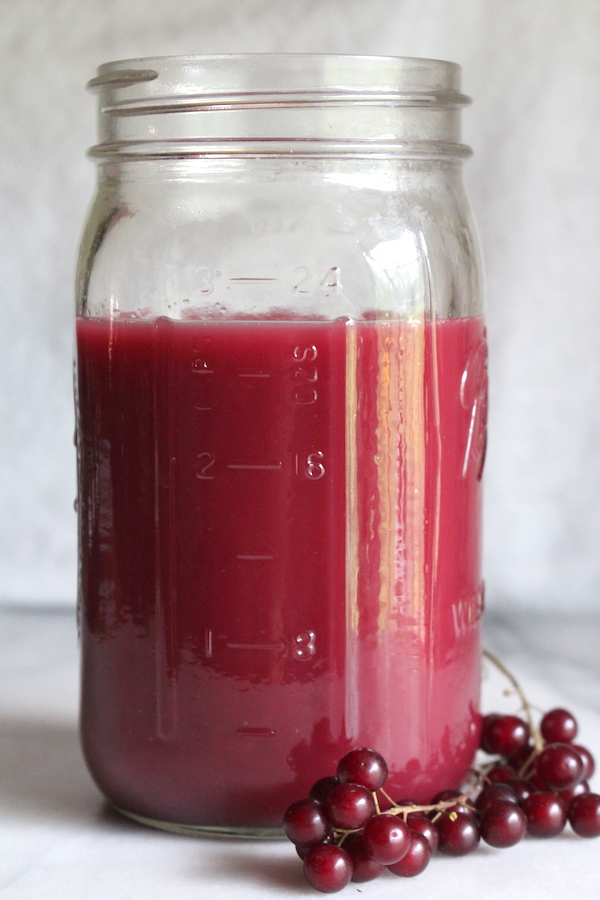
Many of these ingredients can be purchased together in kits. In addition to this, all you’ll then need is a packet of yeast nutrient and your wine yeast.
As for wine yeast, Lalvin EC-1118 is highly recommended. Lalvin EC-1118 is a champagne yeast and a strong fermenter with a neutral taste. It has a high alcohol tolerance (15% to 18%) and can result in a dryer wine for this reason (backsweetening can counteract this, however).
You can also use another champagne yeast like Premiere Blanc. Premier Blanc is a neutral wine yeast with a higher alcohol tolerance to 15%. It’s often used for meads and lighter fruit wines.
Montrachet can work as well. Montrachet is a strong fermenter, commonly used for producing full-bodied red wines. The alcohol tolerance is lower (13%) and results in wines with more residual sweetness.
To make a good batch of chokecherry wine you’ll need between 4 to 5 pounds of chokecherries. For those choosing to juice the fruit, you’ll get about 3 cups of juice from 5 pounds of fruit if you use a steam juicer. With any other method, you’ll likely get a bit less.
For sugar, 2 1/2 pounds should be enough to yield a well-balanced result. With 2 cups per pound, this comes out to 5 cups. If you’re making mead, use the same amount of honey by weight (2 1/2 pounds).
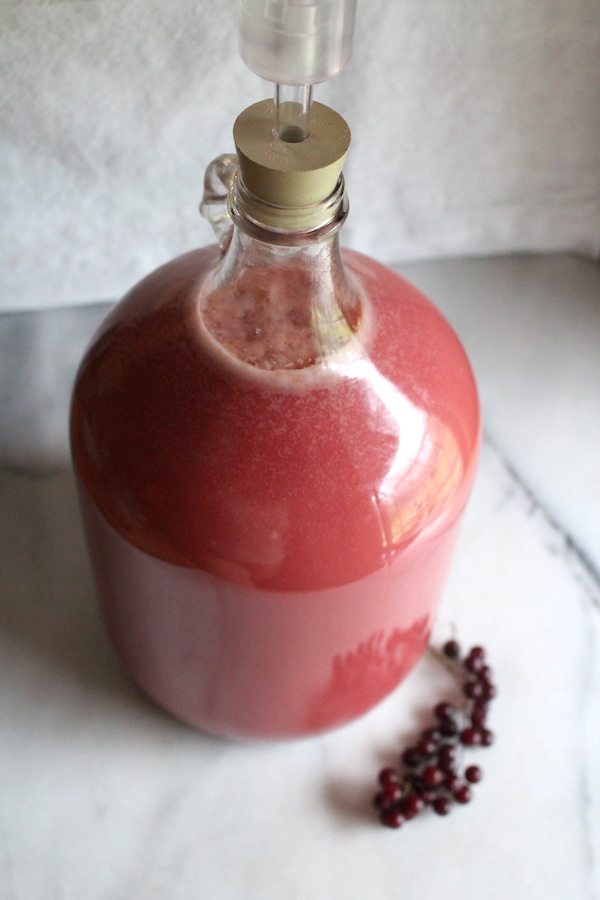
Winemaking Equipment
That covers it in terms of ingredients. Beyond this, the following equipment is also needed:
- One Gallon Glass Carboy (often available as a kit with a rubber stopper and water lock together)
- Rubber Stopper and Water Lock (if not included with carboy)
- Brewing Siphon
- Wine bottles or Flip-top Grolsch bottles
- Bottle Corker and clean, new corks for when the time comes to bottle
- Brewing Sanitizer
Making Chokecherry Wine
There are two methods to make chokecherry wine. You can either include the fruit in the primary ferment or use a steam juicer to extract the juice. To leave the fruit in for primary, you’ll need a wide-mouth carboy. If juicing, you can use a narrow-neck carboy.
To use the juicing method, wash the berries and remove the stems. Juice the fruit via your preferred method (steam juicing will be the most effective and is highly recommended). If you’ve used a steam juicer, allow the juice to cool and move to your carboy.
If juicing the fruit is too much hassle, you can always include the fruit in the primary ferment. To do so, place washed and destemmed chokecherries in a brew bag and gently mash. (The gently part is important — you don’t want to crush the seeds and release their bitter flavor).
Then you’ll need to place your fruit in a wide-mouth carboy.
Next, heat some water and add the sugar, stirring to dissolve. Add to the carboy and let cool. Then add the remaining wine ingredients, except the yeast.
The yeast should be added last when the mixture is cooled to room temperature. Rehydrate your yeast before adding it to your wine mixture by placing it in a little room temperature water for 10 minutes. (Adding yeast directly can shock the yeast).
After you’ve added your yeast, give your wine a stir and fill with enough water to leave 2 inches of headspace in a wide-mouth carboy (or up to the neck for a narrow-neck carboy).
Seal with a water lock. This will let your CO2 escape without allowing any contaminants in to spoil your wine.
This is where your active fermentation should occur. The mixture will be ready to move to secondary once most of the active bubbling has died down (in about 5 to 10 days).
In a little less than a week, you should siphon the mixture to a clean carboy, leaving the sediment behind (and removing the brew bag/fruit). After moving the wine to your new vessel for secondary, be sure to top it with more water to bring it up to the neck of the carboy. The less surface area exposed to air, the better.
Seal with a water lock and let the wine ferment for another 4 weeks in secondary. After a month, many choose to rack to a new container to help clear the sediment and continue to ferment for another 2 or 3 months until the wine clears.
If making chokecherry mead, the time in secondary may be longer. Honey is harder for your yeast to break down than sugar, leading to a longer fermentation.
At the end of secondary, sample your wine to get a sense of the flavor. If it’s too dry for your taste, you can always backsweeten. Always rack to a clean container before backsweetening.
After racking to a new vessel, be sure to stabilize your wine by first adding potassium sorbate and potassium metabisulfite (Campden tablet), waiting 24 hours and then adding sugar. This prevents the danger of the sugar reactivating the ferment. Bottling wine that’s still fermenting can cause bottles to push out corks or even burst under the continuing pressure.
Some choose to skip stabilizing and just put the wine back into ferment until the yeast has completely died out — this is harder to do when using a strong fermenter like Lalvin EC-1118, so stabilizing is really the best course of action here.
You can add the sugar by creating a simple syrup of 1 part sugar and 1 part water and heating it on the stovetop. Start with ½ cup sugar and ½ cup water to sweeten a one-gallon batch of chokecherry wine.
Seal with your water lock and let sit for another week or so before bottling to ensure the yeast has completely died off. After this, bottle and seal with wine corks. Let the wine mature for at least a month or two before drinking. Wine always improves with age, so if you can wait longer the taste will only get better.
Ways to Preserve Chokecherries
You got to those chokecherries before the birds and beasties did — now you just need to preserve them!
- Chokecherry Jelly (and Jam!)
- Chokecherry Syrup
- Dried Chokecherry Patties (Legren)
- 12+ Chokecherry Recipes for Your Wild Harvest
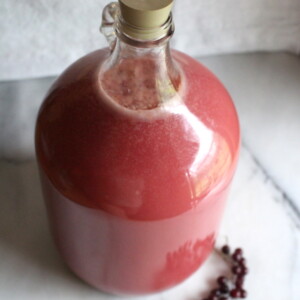
Chokecherry Wine
Ingredients
- 4 to 5 lbs chokecherries, destemmed
- 2 1/2 lbs Sugar, about 5 cups or 2 1/2 lbs honey for mead
- 1 tsp yeast nutrient
- 1 tsp acid blend
- 1 tsp Pectic Enzyme
- wine yeast, see note
- Water, to fill
- Optional ~ Campden Tablet and Potassium Sorbate for Stabilizing, I do not use these
Instructions
- Begin by washing chokecherries and removing stems.
- For juicing method, juice chokecherries using a steam juicer to extract the most juice and pour in the carboy.
- For fruit-in method, gently mash chokecherries and place in a brew bag. Move to a wide-mouth carboy.
- Heat some water and mix in the sugar. Add to carboy and stir. Once cool, add the remaining wine ingredients except for the yeast.
- After adding all the other ingredients, you can add the wine yeast. Rehydrate the yeast in a small amount of water for 10 minutes before adding it to your wine mixture.
- Next, add water to fill the carboy and seal with a water lock.
- Let ferment in primary for 5 to 10 days.
- Siphon to a clean carboy for secondary, leaving the sediment (and fruit) behind and ferment for at least 4 weeks.
- Rack to a new container to help clear the wine. Ferment for another 2 to 3 months.
- Sample the wine and adjust to taste. See notes for backsweetening.
- Siphon the wine into bottles and seal with wine corks.
- Let age at least 2 months before drinking. Wines will continue to improve with age.
Notes
Amount of Juice
You’ll get about 3 cups of juice from 5 pounds of chokecherries if you use a steam juicer. A steam juicer uses a cooking method to extract juice so the seeds won’t make the juice bitter. If you include the fruit in your ferment, 4 to 5 pounds is a good amount.Mead
For chokecherry mead, substitute 1 quart honey for the sugar to yield a one-gallon batch of chokecherry melomel. Time in secondary may be longer than with sugar since honey is less digestible for your yeast than regular sugar.Yeast
For chokecherry wine, there are several yeasts you can choose. Lalvin EC-1118 is the preferred yeast, but I’ve heard of others using Montrachet or Premiere Blanc with success as well. See notes within the article for specific qualities of each yeast.Stabilizing and Back Sweetening
If you find your wine tastes a little too dry for your palate, you do have the option to backsweeten at the end of secondary. First, rack the wine to a clean container and then stabilize the wine (do this by adding 1 Campden tablet and ½ teaspoon potassium sorbate to kill the yeast). Wait 24 hours before adding the sugar. If the yeast isn’t fully killed off, the sugar may reactivate the ferment, causing bottled wine to burst. Add sugar by making a simple syrup of equal parts sugar and water and heating. Start with ½ cup sugar to sweeten a one-gallon batch of chokecherry wine. Wait 1 week before bottling to ensure the ferment does not restart. See notes within the article for more detailed info regarding stabilizing and back sweetening.Summer Wine Recipes
Looking for more simple homemade wine recipes?
Wild Foraged Food Recipes
Want to keep it wild in the kitchen?
